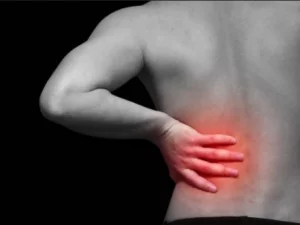Hip flexor tightness has become quite the buzzword in both the healthcare and fitness world and is something that comes up in conversation with our patients quite frequently.
Walking into the gym you can find active individuals everywhere looking for the perfect stretch to “fix” their hip flexor tightness after they’ve received a diagnosis from a physical therapist, physician, chiropractor or self diagnosed via the internet.
Let’s take a look at the hip flexors and their roles to get a better understanding of how we can address this “tightness”.
The Hip Flexors
Most issues with hip flexor issues are associated with the psoas major and the iliacus, often referred to together as the iliopsoas. Their main movement is the actual flexion of the hip flexors with a secondary support of the spine and pelvis.
It’s important here to realize these muscles attach to the spine itself and the inside of the pelvis. This positioning supports the association of the hip flexors with low back and spine pain.

Muscles that contribute to hip flexion as a secondary motion include the TFL, rectus femoris (the main quad muscle), and sartorius including the knee into possible affected joints by hip flexor issues outside of the hip and low back.

How Much Tension Is In Your Hip Flexors?
The Thomas test is a fantastic way to test the health of the musculature around the hip.
What we can learn from this test?
– Upper thigh unable to reach back to the table – guarded anterior hips potentially impacting glute force production
– Knee unable to flex past 80 degrees – guarded and potentially weak or overreliance on quads (which are involved in hip flexion)
– Hip veering off to the side (abducting) – potential overuse/protecting of TFL and IT band
– Leg Rotating – potential hamstring guarding
It’s important to realize that to determine true “tightness” you would have to be completely unconscious.
More often than not we use the word “tension” or “tone” because usually when a motion is shortened by a muscle it is due to a protective measure where the muscle is slightly activated. These muscles that are deemed to be “tight” have full motion once under anesthesia. As they would be when receiving surgery (knees for total knee replacements, frozen shoulder, etc.).
The Best Hip Flexor Stretch
With lots of “tension” and “guarding” in the hip flexors a lot of people are looking for the best hip flexor stretch.
Here we find a proper bridge being one of the best hip flexor stretches.
Why is this?
Let’s use the arm for an example.
Imagine the biceps and triceps for a second. If you wanted to stretch the biceps, full use of the triceps would bring the biceps to the absolute end of its motion due to its positioning opposite of the biceps.
And we get something called “reciprocal inhibition” when we work the triceps due to the brain trying to work one muscle and recognizing that working the biceps would then impede the triceps from working.
Additionally if the biceps were activated for every motion it is likely that the triceps would be underutilized and perhaps a little weak.
The glutes are the antagonist (opposite) muscle to most of the hip flexors, allowing us to get the same results as in the arm example.
Using a bridge properly, including good spinal positioning, can properly address the hip flexor tension as well as build understanding and use of the glutes for functional movements.
Working from two legs to one leg at a time can increase the challenge and will help address one hip over the other.
Maybe Your Hip Flexors Are Weak Instead?
Say you passed the above test, or you are noticing that consistent stretches have yet to produce results.
A common production of “tension, “ “tone,” and “guarding” that can be perceived as tightness in muscles is due to an inherent weakness in the muscle.
The ability of each muscle to produce force is relevant to its length. In order to avoid stressful ranges often weaker muscles can stay slightly on (imagine a car in idle versus turned off) in order to protect itself.
This is why more often than stretching we recommend strengthening a muscle through its full range of motion.
Here can be a simple test of how well you are coordinating your hip flexors through their full range of motion.
How to Strengthen The Hip Flexors
Notice difficulty with the above?
Any work that causes the hip to bend while the spine is held stable (due to their attachment on the spine this is often in a posterior pelvic tilt) can be a great way to load and get the hip flexors strong.
Loading and strengthening of this muscle is going to be very specific for your activities, ranging from working in the testing position of the Thomas test for initial loading to standing for runners and even working to lunge end range lift offs to support those going into deeper squats.
Here are a few options!
The important part is to get a load that is challenging to perform, but not so challenging that you give up your form and control, that is similar to positions you may encounter in your active lifestyle.
We want the hip flexors to get tired.
Why Not Both?
Using the knowledge that the bridge can put our hip flexors at their maximal lengthened position, the bridge itself makes the perfect platform to work the hip flexors.
If we had only one exercise to do for hip flexor health, it would be found in this progression!
Next Steps?
You have a good base to now address hip flexor “tightness” now what?
While we have focused very specifically on the hip flexors, it is important to realize that this is just one joint of the body and that is used in conjunction with others.
How are you moving daily, or not moving daily, that is causing this feeling in your body?
Most functional movements in the human body are multi joint movements and your hip needs to be able to coordinate movements with other portions.
To truly address the root cause we recommend a functional evaluation of your movement, beyond the typical 5 minutes and imaging you get in the physician’s office.
We specialize in helping active individuals get back to the sports and activities they love without taking time off or undergoing invasive treatments.
Real People. Real Pain. Real Work. Real Results.
Click HERE to set up your Free 15 minute Phone Consultation to see how we can help!
🚫The content in this is NOT medical or health advice and is intended for educational and entertainment purposes only. See a healthcare professional if you have any questions about your individual healthcare needs.🚫



